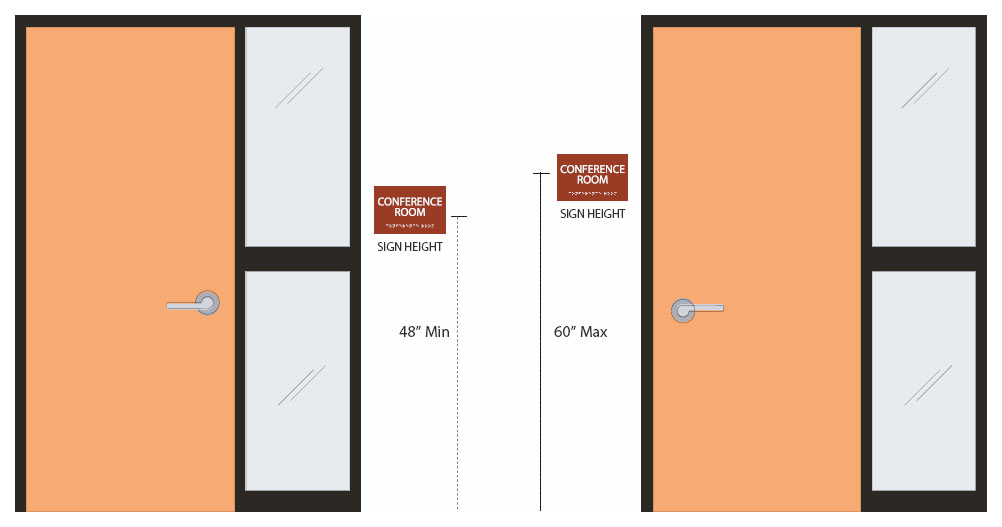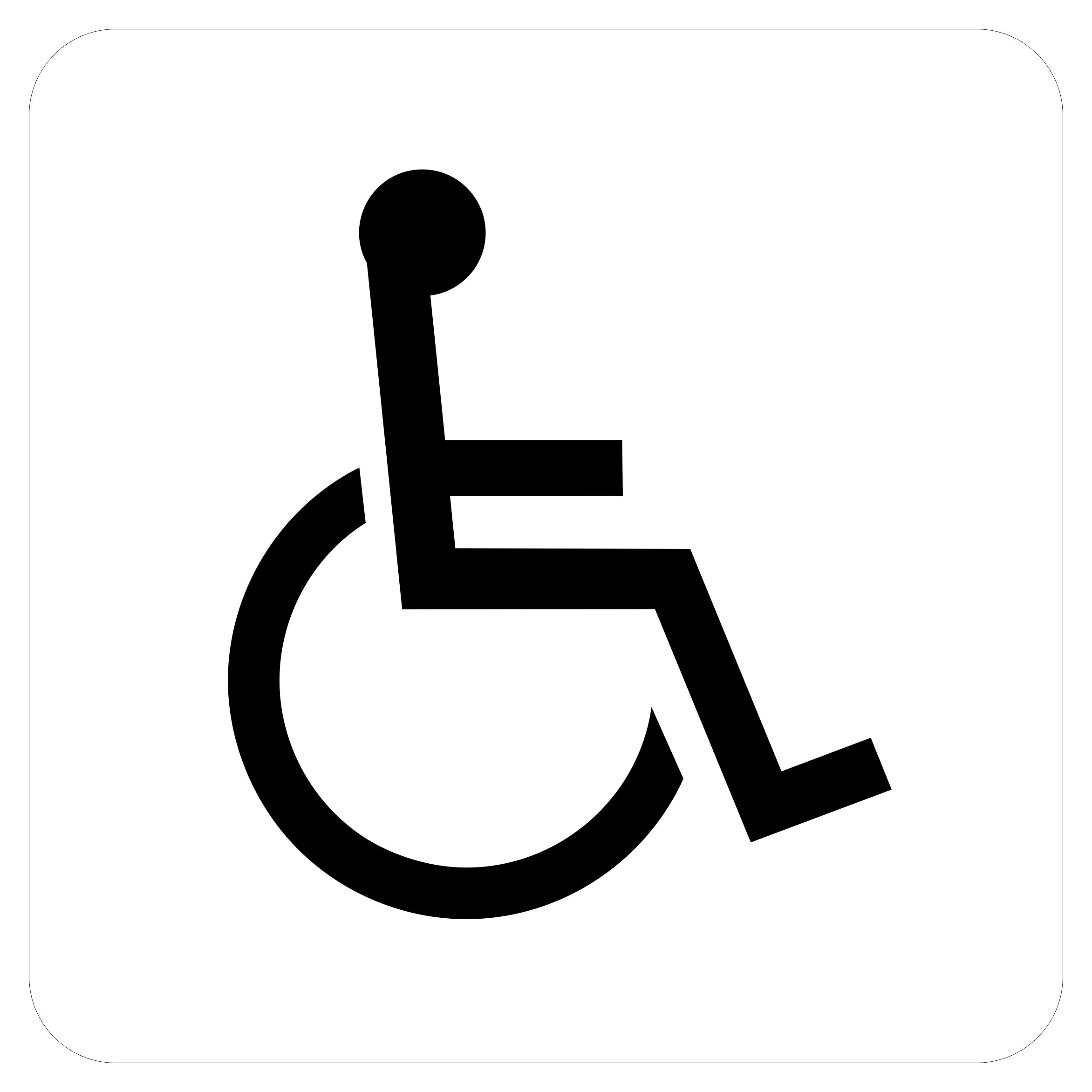The Impact of ADA Signs on Neighborhood Access
The Impact of ADA Signs on Neighborhood Access
Blog Article
Checking Out the Secret Functions of ADA Signs for Boosted Access
In the world of access, ADA signs serve as silent yet effective allies, ensuring that areas are navigable and inclusive for individuals with impairments. By incorporating Braille and responsive elements, these signs break obstacles for the aesthetically impaired, while high-contrast color pattern and readable fonts deal with varied aesthetic needs. Moreover, their strategic placement is not approximate however rather a computed initiative to promote seamless navigating. Beyond these features lies a much deeper narrative regarding the evolution of inclusivity and the ongoing dedication to producing fair rooms. What much more could these signs symbolize in our pursuit of universal access?
Importance of ADA Compliance
Making certain compliance with the Americans with Disabilities Act (ADA) is critical for fostering inclusivity and equivalent accessibility in public spaces and workplaces. The ADA, enacted in 1990, mandates that all public centers, companies, and transportation solutions accommodate people with handicaps, guaranteeing they enjoy the same rights and chances as others. Conformity with ADA criteria not just meets legal responsibilities however likewise enhances an organization's credibility by showing its dedication to variety and inclusivity.
Among the vital facets of ADA conformity is the execution of accessible signage. ADA signs are made to make sure that individuals with disabilities can easily navigate with spaces and structures. These signs have to stick to specific standards regarding size, font, color contrast, and placement to guarantee visibility and readability for all. Effectively implemented ADA signage assists get rid of barriers that people with specials needs typically run into, therefore promoting their independence and confidence (ADA Signs).
In addition, adhering to ADA guidelines can minimize the danger of potential fines and lawful repercussions. Organizations that stop working to follow ADA guidelines might face charges or claims, which can be both economically burdensome and damaging to their public photo. Therefore, ADA compliance is essential to promoting a fair setting for every person.
Braille and Tactile Components
The incorporation of Braille and responsive components into ADA signs embodies the principles of ease of access and inclusivity. These functions are vital for individuals that are aesthetically impaired or blind, enabling them to navigate public spaces with better self-reliance and self-confidence. Braille, a tactile writing system, is important in giving composed details in a style that can be quickly viewed through touch. It is usually placed underneath the corresponding text on signs to make sure that individuals can access the details without aesthetic support.
Tactile elements extend past Braille and consist of elevated personalities and symbols. These components are developed to be noticeable by touch, permitting individuals to recognize area numbers, toilets, departures, and other vital areas. The ADA establishes particular guidelines regarding the dimension, spacing, and placement of these responsive components to optimize readability and guarantee uniformity across various settings.

High-Contrast Color Design
High-contrast color pattern play a critical role in boosting the visibility and readability of ADA signs for people with aesthetic impairments. These systems are important as they make best use of the difference in light reflectance in between text and history, guaranteeing that signs are easily noticeable, also from a distance. The Americans with Disabilities Act (ADA) mandates the usage of certain color contrasts to suit those with limited vision, making it a crucial element of compliance.
The efficiency of high-contrast shades lies in their capability to attract attention in different lights conditions, including dimly lit settings and areas with glare. Typically, dark text on a light history or light message on a dark history is employed to accomplish optimum contrast. Black message on a yellow or white background offers a stark visual distinction that helps in fast acknowledgment and understanding.

Legible Fonts and Text Size
When taking into consideration the design of ADA signage, the selection of understandable typefaces and suitable message size can not be overstated. These components are critical for making certain that signs are obtainable to people with aesthetic impairments. The Americans with Disabilities Act (ADA) mandates that font styles must be not italic and sans-serif, oblique, script, extremely ornamental, or of uncommon form. These requirements help guarantee that the text is quickly legible from a distance which the characters are appreciable to diverse audiences.
According to click for more info ADA guidelines, the minimum message elevation must be 5/8 inch, and it should raise proportionally with checking out range. websites Consistency in text dimension adds to a natural visual experience, assisting people in browsing atmospheres successfully.
Furthermore, spacing between letters and lines is indispensable to readability. Sufficient spacing protects against personalities from appearing crowded, enhancing readability. By adhering to these standards, designers can significantly improve accessibility, making sure that signage offers its intended objective for all people, regardless of their aesthetic abilities.
Reliable Placement Strategies
Strategic positioning of ADA signs is essential for taking full advantage of availability and making sure conformity with lawful requirements. ADA guidelines state that indications must be placed at an elevation in between 48 to 60 inches from the ground to guarantee they are within the line of view for both standing and seated individuals.
In addition, signs must be placed surrounding to the latch side of doors to allow very easy recognition before access. Consistency in indication placement throughout a facility improves predictability, reducing confusion and boosting overall customer experience.

Final Thought
ADA signs play a vital role in advertising accessibility by integrating attributes that deal with the demands of people with disabilities. These elements collectively promote an inclusive atmosphere, emphasizing the relevance of ADA compliance in guaranteeing equal gain access to for all.
In the world of access, ADA indications serve as silent yet effective allies, ensuring that rooms are inclusive and navigable for people with disabilities. The ADA, enacted in 1990, mandates that all public facilities, companies, and transport services accommodate people with specials needs, ensuring they delight in the exact same rights and possibilities as others. ADA Signs. ADA indications are this hyperlink made to make sure that people with impairments can conveniently navigate via areas and buildings. ADA standards specify that indicators must be placed at a height between 48 to 60 inches from the ground to ensure they are within the line of sight for both standing and seated individuals.ADA indications play a crucial function in advertising access by integrating functions that resolve the needs of individuals with handicaps
Report this page